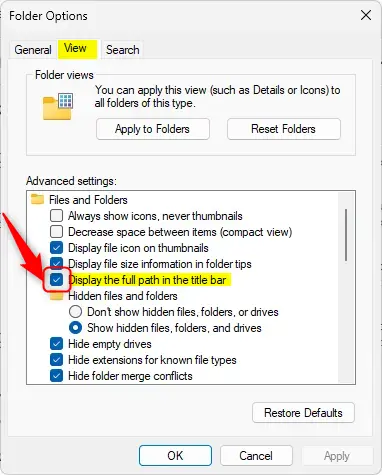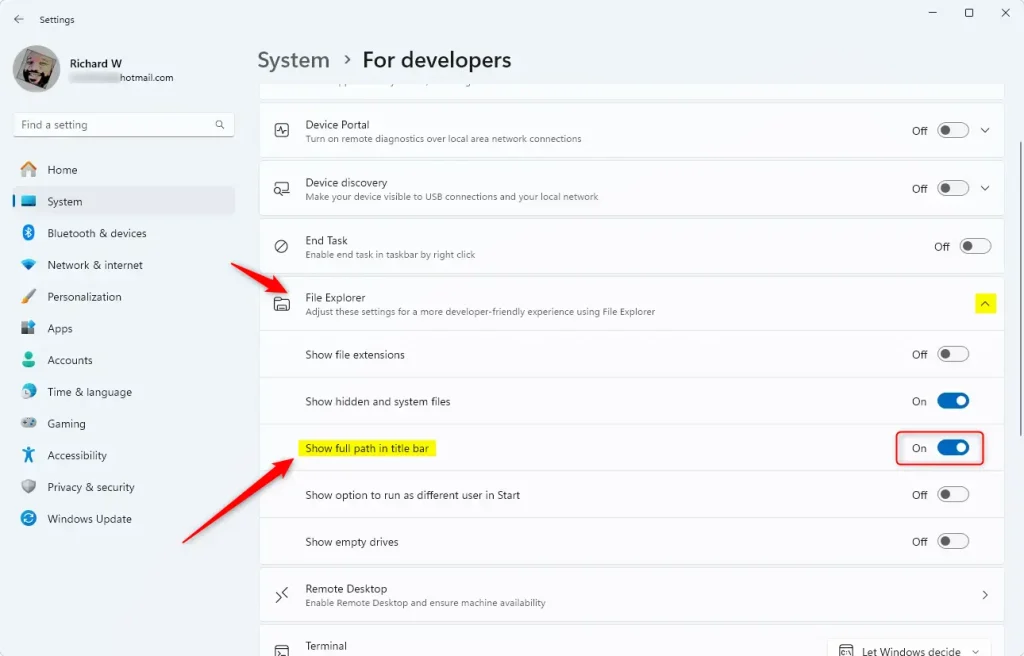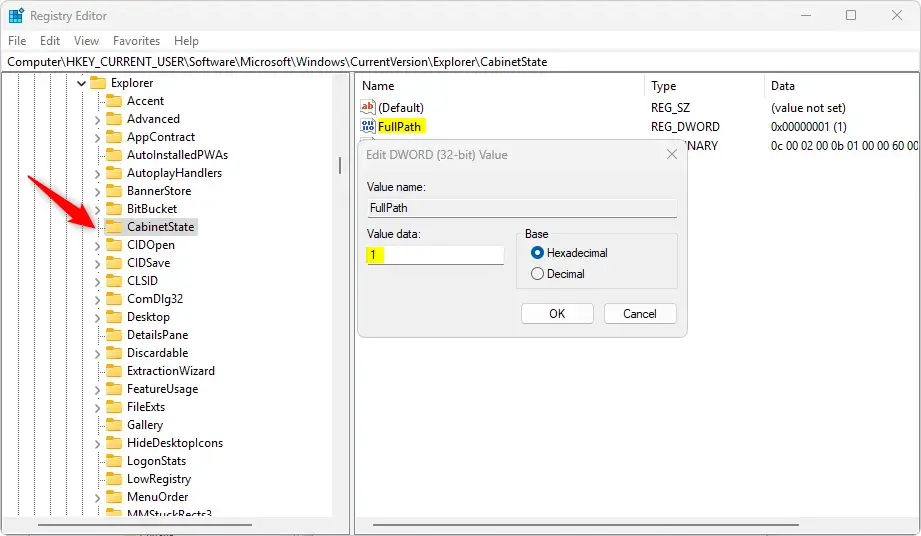This article explains how to display the full path of folders in the File Explorer title bar on Windows 11.
Windows File Explorer is a file manager application that is included in the Microsoft Windows operating system. A graphical user interface lets you view, copy, move, delete, and rename files and folders and organize them hierarchically.
With File Explorer, you can use the Undo and Redo commands, enable or disable File Explorer folder options, show or hide the details pane, show or hide the Gallery, and more.
With the new File Explorer with tabs, the folder name or full path will now display on the tab. Unlike the earlier features, the full path of folders is no longer available in File Explorer as breadcrumbs. However, you can hover the pointer on the tab to see the full path as a pop-up.
If you want to always show the full path of folders in the title bar in File Explorer, use the steps below.
Show full path in File Explorer
As mentioned, File Explorer doesn’t display the full path of folders in the new version. If you want always to show the full path of folders, use the steps below.
First, open the File Explorer Folder Options.
Then, click on the View tab.
Check the box next to Display the full path in the title bar to display the full path in File Explorer. Uncheck the box to hide the full path.

Click OK to apply your changes.
Turn On or Off the full path feature in File Explorer in Settings
You can also turn on or off the full path feature in File Explorer using the Settings app.
To do that, open the Developer feature in Windows 11. Click on the Start menu > Settings > System > For developers.
Expand the File Explorer tile, then toggle the full path feature button on or off.

Close the Settings app when done.
Show or hide the full path feature in File Explorer using Windows Registry
Yet, another way to show or hide the full path feature in File Explorer is to use the Windows Registry Editor.
First, open the Windows Registry and navigate to the folder key path below.
Computer\HKEY_CURRENT_USER\Software\Microsoft\Windows\CurrentVersion\Explorer\CabinetState
Right-click CabinetState > New > DWORD (32-bit) Value and name the new DWORD FullPath.
Double-click FullPath and change the value 1 to display the full path of folders in File Explorer.
Enter 0 to turn off displaying the full path.

You may have to reboot your computer to apply the changes.
That should do it!
Conclusion:
In summary, displaying the full path of folders in the title bar of File Explorer on Windows 11 can enhance your navigation experience. Here are the key points to remember:
- Access Methods: You can enable the full path feature through Folder Options, the Settings app, or the Windows Registry.
- Flexibility: The ability to toggle the feature on or off allows for a customizable user experience.
- Enhanced Navigation: Seeing the full path helps you understand your directory structure more efficiently.
- Visual Confirmation: Hovering over tabs can provide quick access to the full path if needed.
- Reboot Requirement: Changes made via the Windows Registry may require a system reboot to take effect.
By following these steps, you can easily manage how folder paths are displayed to better suit your workflow in Windows 11.

Leave a Reply